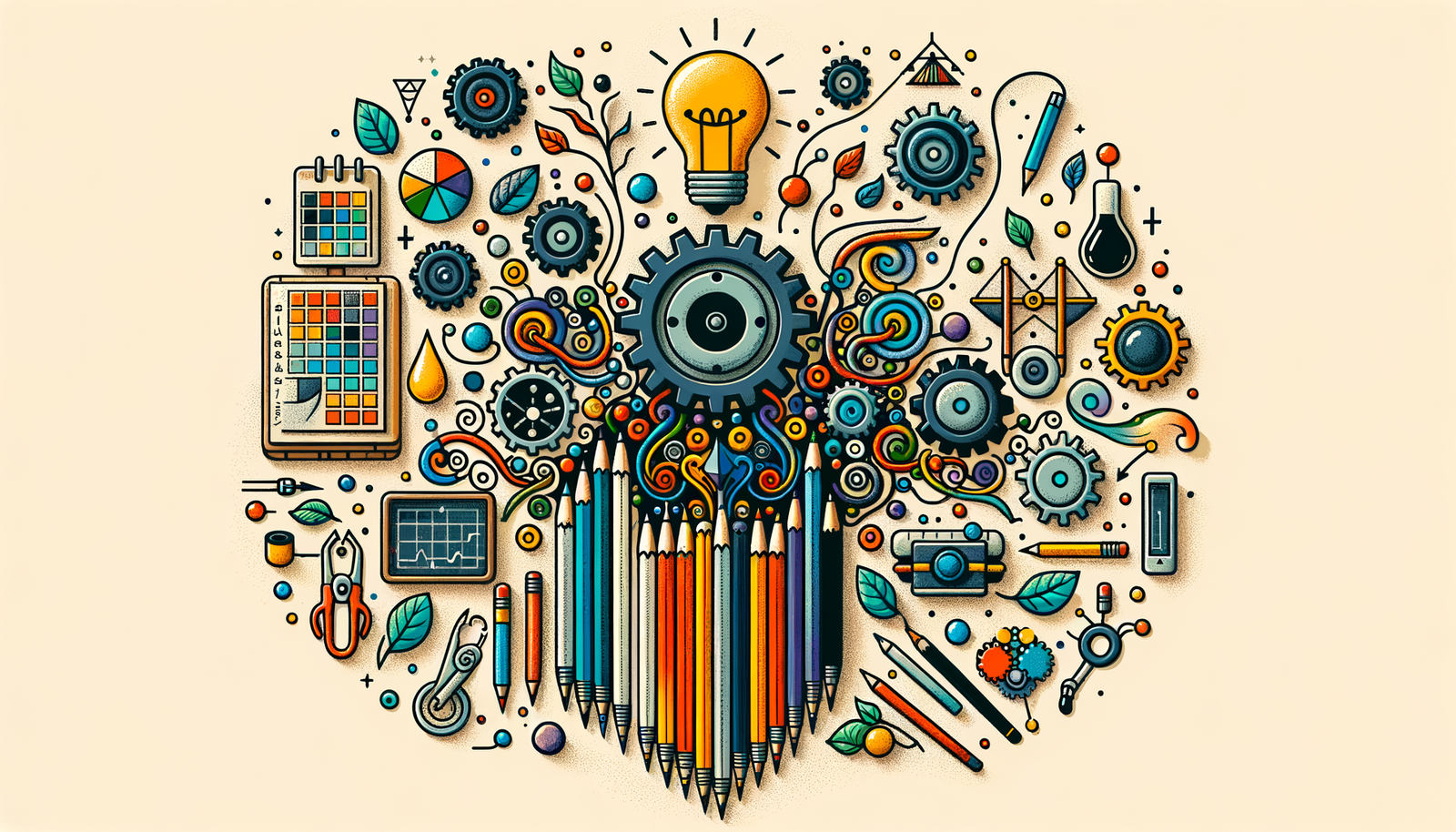Your Cart is Empty
Customer Testimonials
-
"Great customer service. The folks at Novedge were super helpful in navigating a somewhat complicated order including software upgrades and serial numbers in various stages of inactivity. They were friendly and helpful throughout the process.."
Ruben Ruckmark
"Quick & very helpful. We have been using Novedge for years and are very happy with their quick service when we need to make a purchase and excellent support resolving any issues."
Will Woodson
"Scott is the best. He reminds me about subscriptions dates, guides me in the correct direction for updates. He always responds promptly to me. He is literally the reason I continue to work with Novedge and will do so in the future."
Edward Mchugh
"Calvin Lok is “the man”. After my purchase of Sketchup 2021, he called me and provided step-by-step instructions to ease me through difficulties I was having with the setup of my new software."
Mike Borzage
Design Software History: Ethical Challenges and Transformative Impact of AI in Design Software
November 19, 2024 6 min read


Introduction
The integration of artificial intelligence (AI) into design software has accelerated rapidly in recent years, reshaping the landscape of creative industries. From architectural blueprints to product prototypes, AI technologies are becoming indispensable tools that enhance efficiency and innovation. As algorithms become more sophisticated, they are increasingly capable of making or suggesting design decisions that were traditionally the domain of human designers. This trend brings about a transformative shift in design workflows, enabling the generation of complex structures and patterns that might be difficult or time-consuming for humans to conceive manually.
However, as these AI-driven tools become more autonomous and influential in the design process, ethical considerations emerge as a critical area of concern. Issues such as bias embedded within algorithms, the opacity of decision-making processes, and the accountability for AI-generated outcomes necessitate a thorough examination. The potential for AI to unintentionally perpetuate stereotypes, exclude certain user groups, or make decisions that have unforeseen negative consequences underscores the importance of integrating ethics into the development and deployment of these technologies.
The purpose of this article is to delve into the role of ethics in AI applications within design, focusing on the potential implications of AI-driven decisions and the practices adopted by the industry to address these challenges. By exploring the intersection of AI technology and ethical responsibility, we aim to highlight the need for conscientious approaches that ensure AI serves as a beneficial collaborator rather than a source of new problems. The fusion of AI and design holds immense promise, but it also calls for a proactive stance on ethical issues to guide its evolution responsibly.
Understanding AI in Design Software
At its core, artificial intelligence refers to the simulation of human intelligence processes by machines, especially computer systems. In the context of design software, AI encompasses a variety of technologies that enable software to perform tasks that traditionally required human cognition. These tasks include learning from data, recognizing patterns, making decisions, and improving from experience without explicit programming for each action.
Common applications of AI in design workflows have revolutionized the way designers approach their projects. One prominent example is generative design, where algorithms create a multitude of design options based on specified constraints and objectives. This allows designers to explore a vast array of solutions that might not have been conceived through traditional methods. Another significant application is predictive analytics, which leverages data to forecast trends, user behaviors, or material performance, enabling designers to make informed decisions that enhance functionality and user experience.
AI technologies are influencing design decisions across various domains. In architecture, AI aids in optimizing building designs for energy efficiency and structural integrity. In product design, AI algorithms can suggest materials or shapes that reduce weight while maintaining strength. In user interface design, AI can analyze user interactions to improve usability and accessibility. By automating routine tasks and providing data-driven insights, AI allows designers to focus more on creativity and strategic thinking.
While the success of AI integration in design is evident, it's essential to recognize that these technologies are tools that extend human capabilities rather than replace them. The synergy between human intuition and AI's computational prowess can lead to innovative solutions that neither could achieve alone. As AI continues to evolve, its role in design software is expected to expand, offering new opportunities and challenges for designers and developers alike.
Ethical Considerations in AI-Driven Design
The integration of AI into design software brings forth several ethical considerations that must be addressed to ensure responsible use. A primary concern is bias in algorithms. AI systems learn from data, and if the training data reflects existing biases or lacks diversity, the AI may perpetuate or even amplify these biases in its outputs. This can lead to designs that unintentionally discriminate against certain groups or fail to meet the needs of a diverse user base.
Another critical issue is accountability. When AI systems make or suggest design decisions, determining who is responsible for the outcomes becomes complex. If an AI-generated design leads to a product flaw or user harm, it's challenging to assign blame: is it the developer of the AI, the designer who used the AI tool, or the AI itself? This ambiguity necessitates clear guidelines and ethical frameworks to define accountability in AI-assisted design processes.
Transparency is also a significant ethical concern. Many AI algorithms, particularly those based on deep learning, operate as "black boxes," making it difficult to understand how they arrive at certain decisions. This lack of transparency can erode trust and make it challenging for designers to justify AI-generated design choices to clients or stakeholders. Moreover, without transparency, it's harder to detect and correct biases or errors within the AI system.
These key ethical issues include:
- Bias in Algorithms: Risk of perpetuating existing prejudices through biased training data.
- Accountability: Challenges in assigning responsibility for AI-driven decisions and outcomes.
- Transparency: Difficulty in understanding and explaining AI decision-making processes.
- Impact on Creativity: Potential diminishment of human creativity due to over-reliance on AI.
The impact of automated decision-making on creative processes is profound. While AI can enhance creativity by providing novel ideas and solutions, there is a risk that over-reliance on AI could diminish the human element of design. The unique perspectives, emotional intelligence, and cultural insights that human designers bring may be undervalued if AI suggestions are taken at face value without critical assessment. It's essential to strike a balance where AI serves as a collaborative partner rather than a replacement for human creativity.
Stakeholder engagement is crucial in developing ethical AI practices in design. This involves not only designers and developers but also end-users, clients, ethicists, and policymakers. By involving a diverse range of stakeholders, the development of AI systems can be guided by a spectrum of perspectives and values. This collaborative approach helps ensure that AI tools are designed with ethical considerations at the forefront, addressing potential issues such as bias, fairness, and social impact from the outset.
Industry Responses and Best Practices
The growing awareness of ethical challenges in AI-driven design has led to various responses from industry organizations and initiatives dedicated to promoting responsible AI use. Entities such as the Partnership on AI, a consortium of technology companies, have been established to study and formulate best practices on AI technologies. They focus on issues like fairness, transparency, and accountability, aiming to guide the industry towards ethical AI development and deployment.
Several industry leaders have also developed and adopted AI ethics frameworks that outline principles for ethical AI use. These frameworks typically emphasize values such as respect for human autonomy, prevention of harm, fairness, and explicability. For example, design software companies are incorporating guidelines that ensure their AI tools are developed with considerations for minimizing bias and enhancing transparency in their operations.
Current standards and guidelines for ethical AI use in design software development are becoming more prevalent. Organizations like the Institute of Electrical and Electronics Engineers (IEEE) have published guidelines, such as the IEEE Global Initiative on Ethics of Autonomous and Intelligent Systems, which provide recommendations for ethical AI practices. These standards serve as a reference for developers and designers to align their AI systems with ethical considerations, promoting socially beneficial outcomes.
To navigate ethical challenges, designers and developers are encouraged to adopt several best practices. One recommendation is to implement algorithmic transparency, where the workings of AI systems are documented and understandable to users. This helps build trust and allows for informed decision-making. Another practice is to engage in diverse data collection to train AI models, ensuring that the AI can serve a wide range of users without bias. Regular audits and assessments of AI systems for ethical compliance can also help identify and mitigate potential issues before they escalate.
Moreover, fostering a culture of ethical awareness within organizations is crucial. This can involve training and education for team members on ethical AI principles, as well as establishing ethics committees or roles dedicated to overseeing AI projects. By embedding ethics into the organizational fabric, companies can more effectively ensure that their AI-driven design tools are developed and used responsibly.
Conclusion
The ascent of artificial intelligence within design software presents both remarkable opportunities and significant ethical challenges. Addressing these ethical considerations is not merely a supplementary task but a fundamental aspect of integrating AI into the creative process. By acknowledging issues such as bias, accountability, and transparency, the industry can work towards solutions that harness the benefits of AI while mitigating potential harms.
It's imperative for industry stakeholders—including designers, developers, companies, and policymakers—to prioritize ethics alongside innovation. This involves active engagement in ethical discourse, adherence to established guidelines, and a commitment to continuous improvement in AI practices. By doing so, the industry can foster AI technologies that not only enhance design capabilities but also promote fairness, inclusivity, and societal well-being.
Looking ahead, the intersection of ethics, AI, and design software development will continue to evolve. As AI technologies become more advanced and pervasive, the ethical implications will grow in complexity. The future of design software hinges on the industry's ability to navigate this landscape thoughtfully. By integrating ethical considerations into the core of AI development and usage, the design community can ensure that AI serves as a force for positive transformation, enriching the creative process and delivering value to society at large.
Also in Design News

Rhino 3D Tip: TransformAgain: Repeat Exact Move/Rotate/Scale Transforms Across Objects
December 26, 2025 2 min read
Read More
Cinema 4D Tip: Connect Objects + Delete for clean, export-ready meshes
December 26, 2025 2 min read
Read More
Revit Tip: Revit Conceptual Mass Workflow: Setup, Parametrics, and Conversion
December 26, 2025 2 min read
Read MoreSubscribe
Sign up to get the latest on sales, new releases and more …


